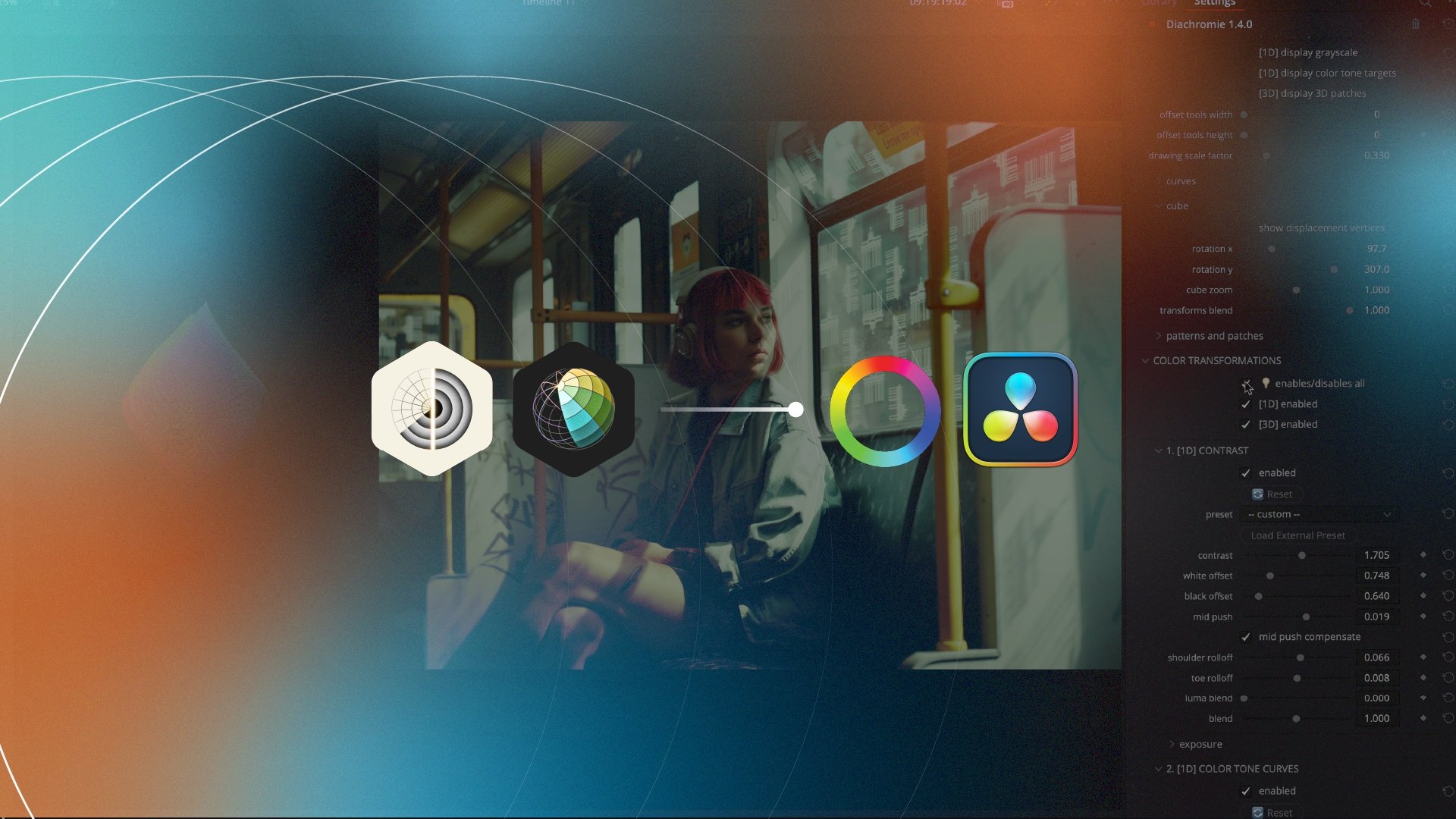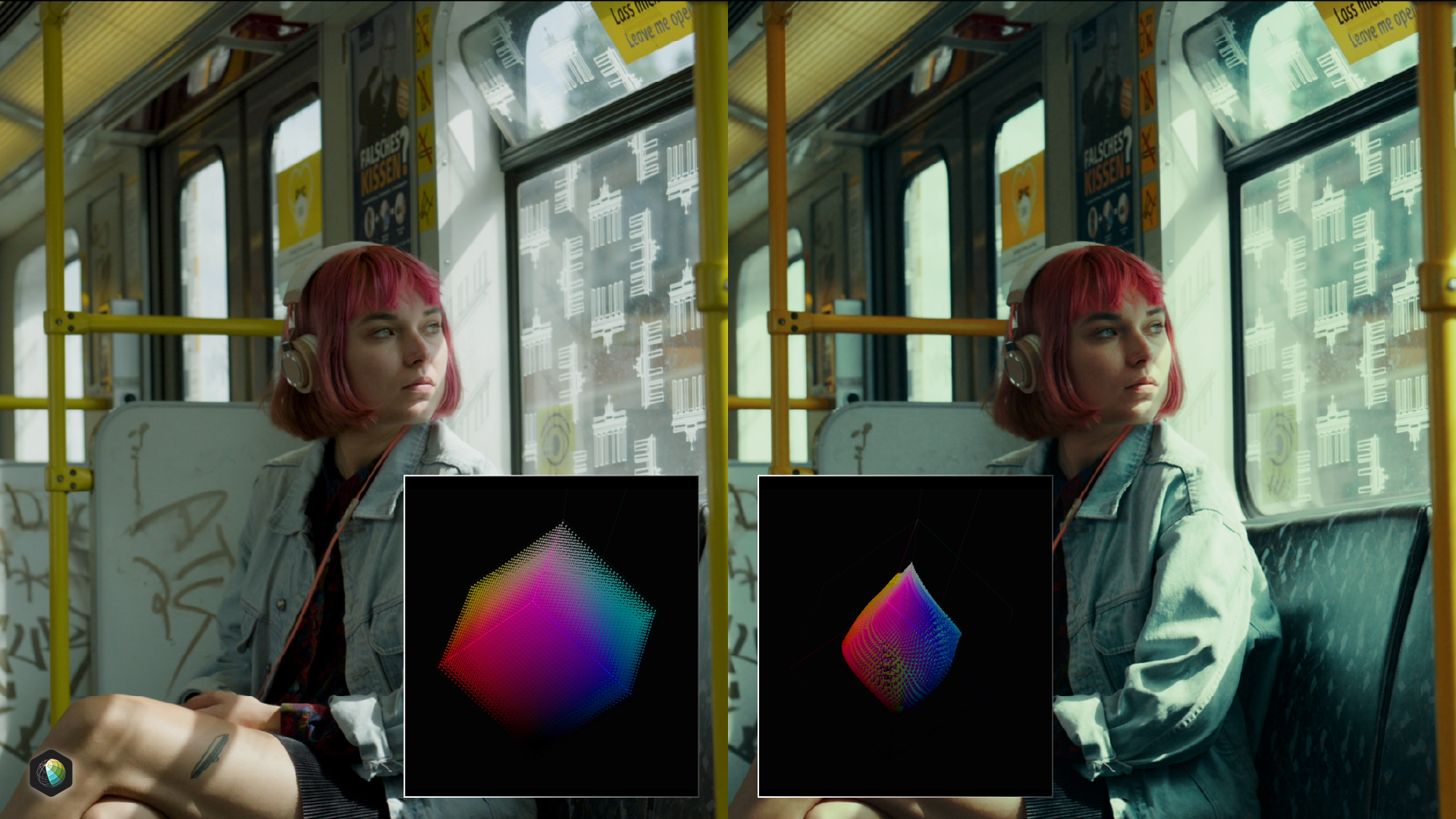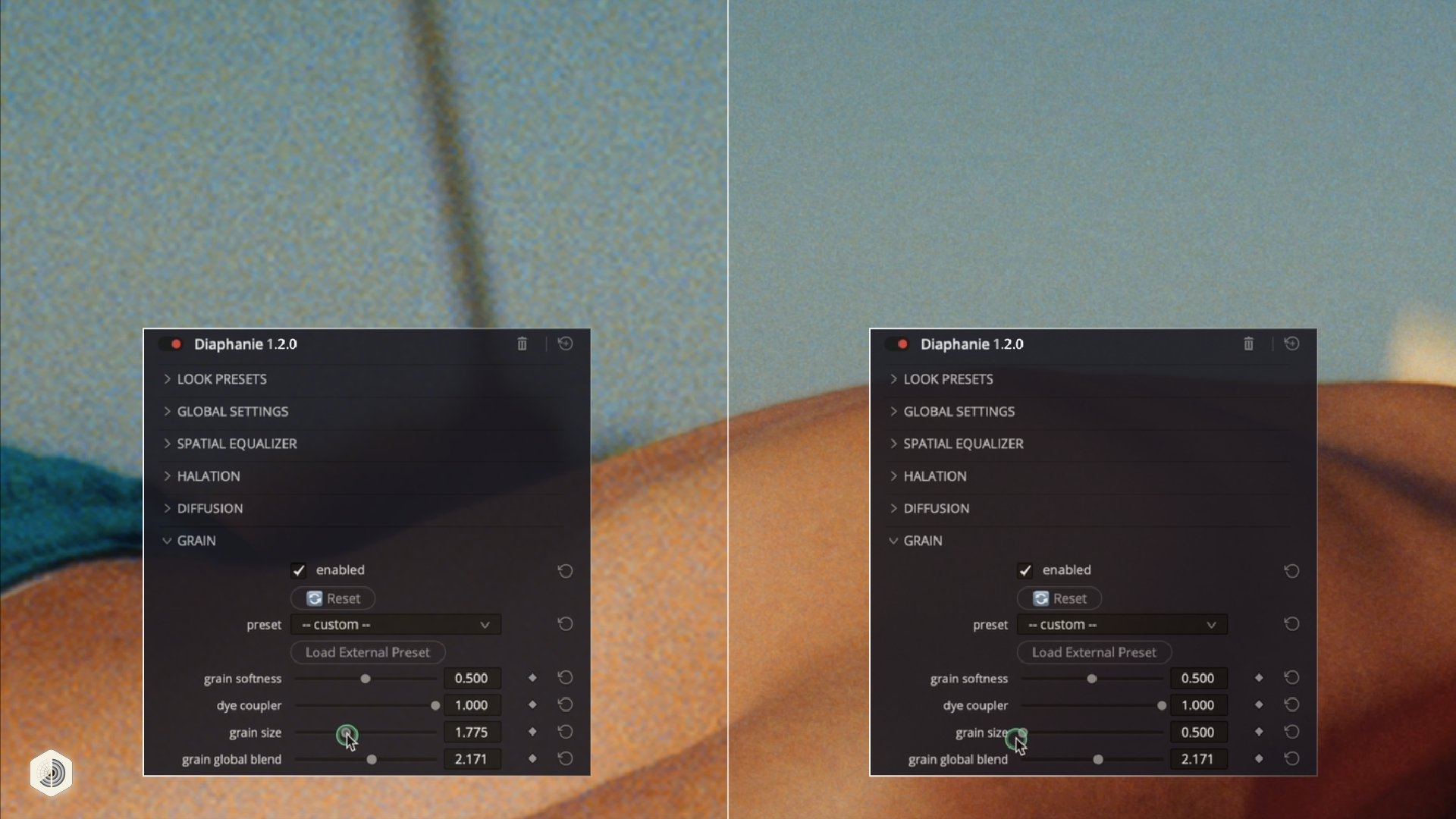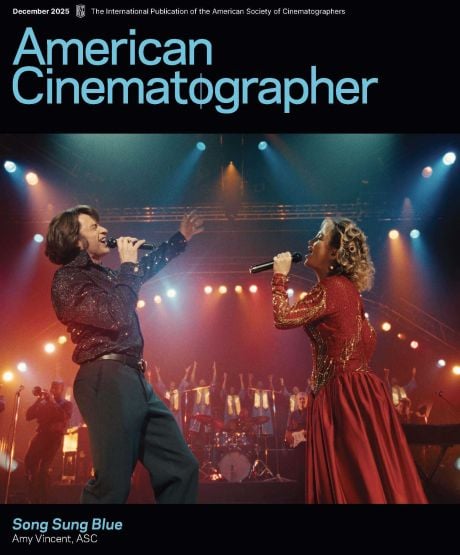
Inside HAL Picture's Refreshing Approach to Look Development
Developed by cinematographers and DITs, Diaphanie and Diachromie are OFX plugins redefining the look creation process.
In the ever-evolving landscape of cinematography, image-making remains a balance of art and science, a space where creative intent meets technical precision. Yet as color grading suites have become increasingly sophisticated, many filmmakers find themselves facing a paradox: the more advanced the tools, the less transparent they often become.
At the heart of this shifting ecosystem, HAL Picture emerges as a new player with deep industry roots. The company is part of HAL, a creative technology studio dedicated to developing advanced tools for sound and image professionals - from HAL Audio’s sound design and mix plugins to next-generation color science solutions. HAL itself is an offshoot of Polyson, one of France’s leading post-production houses, whose work spans feature films, documentaries, and premium series for national and international productions. This heritage places HAL Picture close to the day-to-day challenges of post-production, grounding its innovation in both technical excellence and the practical realities faced by cinematographers and colorists.
Behind polished film emulations and neatly packaged LUT libraries, the underlying process of image transformation often remains hidden. Those “black boxes” too often leave cinematographers and colorists adjusting their look without truly grasping their impact. For three French cinematographers and DIT- Martin Roux (AFC), Olivier Patron, and Paul Morin, that limitation became unacceptable. At the time, truly robust color science tools were almost non-existent, and those available often hid their inner workings behind impenetrable interfaces. The team saw an opportunity: to build tools from the ground up that would not only give filmmakers more control, but also rest on clean mathematical foundations. The result is HAL Picture, a new studio dedicated to designing intelligent image science and offering filmmakers the clarity, control, and creative freedom they’ve been searching for.
From Frustration to Innovation
All three founders have spent years behind the camera and in grading tools, shaping images for projects that demanded both artistic takes and technical rigor. Across those experiences, a recurring challenge emerged: the gap between what they envisioned and what their tools allowed them to achieve.
Their solution was to rethink the relationship between image science and artistic expression from the ground up. Instead of another collection of LUTs or film emulations, they envisioned a toolset that breaks down look creation into controllable, detailed, precise settings. Something that would feel less like applying a filter and more like crafting the very identity of an image.

Breaking Down the Image
At the heart of HAL Picture’s offering are two OFX plugins, Diachromie and Diaphanie, designed to integrate seamlessly into DaVinci Resolve and Baselight. Together, they approach look creation from complementary angles: color and texture.
Diachromie focuses on the chromatic structure of the image. Its parametric controls allow users to build looks with granular tools for contrast shaping, tone curve refinement, and complex color volume transformations and bending. Rather than relying on fixed color models or LUTs, Diachromie gives filmmakers direct access to the structures that define color behaviors. The result is a level of nuance and intentionality that traditional grading workflows rarely allow.

Diaphanie, meanwhile, tackles an equally critical part of the cinematic image: texture. It introduces a Spatial Equalizer that lets users manipulate micro and macro detail layers independently, controlling the depth and feel of the image at a structural level. Additional modules emulate halation and diffusion, recreating the optical phenomena that give analog film its signature glow, while a procedural engine enables filmmakers to tailor image grain.
This combination of deep parametric control and elegant emulation sets HAL Picture apart. It’s not about offering a menu of stylistic choices, it’s about handing filmmakers the assets from which any look can be crafted.
Scientific Fluency Dedicated To Creation
The philosophy behind HAL Picture is rooted in the idea that scientific rigor should empower artistic decisions. To build Diachromie and Diaphanie, HAL Picture’s team observed and analyzed the behaviour of real film under a variety of conditions, and translated their findings into measurable parameters.
From the start, HAL Picture’s objective was not only to make color science more accessible, but also cleaner and more reliable. Instead of relying on approximations or sampled data (a frequent compromise in existing solutions) the plugins are built on mathematically robust models designed to behave predictably and consistently across different workflows. This focus on solid, verifiable calculations ensures that each parameter responds as expected, even under significant adjustments.
The toolset supports continuous transformations, ensuring that even extreme manipulations remain mathematically stable. It is multi-resolution compatible, delivering consistent results whether grading for a streaming, theatrical, or large-format projection. Its seamless integration into color-managed workflows matches the industry’s highest standards, and is designed to evolve with them.

Rethinking the Look Development Workflow
For cinematographers and colorists, the implications of this approach go far beyond a new set of controls. By breaking look creation into its constituent elements, HAL Picture encourages a workflow that is more accessible, collaborative and creative for DOPs and colorists.
Beyond creative freedom, the plugins are built to integrate seamlessly into the existing production environment. As said before, they are fully compatible with standard color-managed pipelines and fit naturally into collaborative processes involving editing, finishing, and delivery. The team is also exploring expanded compatibility with VFX and on-set workflows, part of a broader commitment to keeping the toolset adaptable as production pipelines evolve.
Diachromie and Diaphanie’s granularity also opens up new opportunities for consistency across projects. Every setting can be saved and recalled, allowing filmmakers to build a personal library of looks. Not just LUTs, but modular recipes they can refine over time. Presets, stored as XML files, capture the transformation values of a look at any given time. They can be shared, opened and adjusted at any stage of the pipeline. In this ecosystem, a look can be stored as a Presets to guarantee the continuity of the look development throughout projects.

Beyond LUTs and Toward True Creative Control
For decades, LUTs and pre-made looks have been the default tools for filmmakers seeking to define their visual identity. While convenient, they are fixed, often opaque, and rarely adaptable. HAL Picture offers alternative customizable stunning presets, backed by real-world observations and data, that serve as starting points for unique creations.
This shift mirrors a broader trend in the industry: the movement away from one-size-fits-all solutions toward deeply customizable, artist-driven workflows. As filmmakers seek more distinctive visual signatures and audiences become more visually literate, the tools they use must evolve too.

A New Paradigm For Look Development
At its core, HAL Picture contributes to building a new era for color science. It acknowledges that the language of contrast curves and chroma vectors can be just as expressive as that of lenses and lighting. It understands that creative confidence comes not just from intuition, but from knowledge and control.
As the industry continues to evolve, shaped by hybrid workflows, high dynamic range, and ever expanding delivery formats, the demand for tools that are both technically robust and creatively liberating is only growing. HAL Picture stands at this intersection : a bridge between mathematics and emotion, precision and expression, science and art.

Availability & Pricing
Diachromie and Diaphanie are available as OFX plugins for DaVinci Resolve and Baselight, compatible with macOS and Windows.
Diachromie or Diaphanie (one plugin alone) – Perpetual license : €1100 | Subscription : monthly €70, quarterly €190, annually €500
Dia/Dia Suite (bundle with both plugins) – Perpetual license : €1950 | Subscription : monthly €125, quarterly €320, annually €850
Each license authorizes use of the plugin for its active term and includes all updates issued within that period, plus access to a library of customizable presets, for two seats (with the possibility to add more).
Each license includes free updates for one year, multi-resolution support and a library of customizable presets.
A free demo version can be requested at: www.hal-picture.com
Educational pricing and studio licenses are available upon request.






